The groups met at the Staten Island Ferry's Whitehall Terminal at the southern tip of Manhattan. I noticed, for the first time, a vendor selling only selfie sticks (usually it's bottles of water or umbrellas).

First we cut through Battery Park, best known for its views of the Statue of Liberty, but home to several sculptures and monuments of its own worth visiting. Like the New York Korean War Veterans Memorial; it's a war that tends to get overlooked, crowded out of American memory by WWII and the Vietnam War.
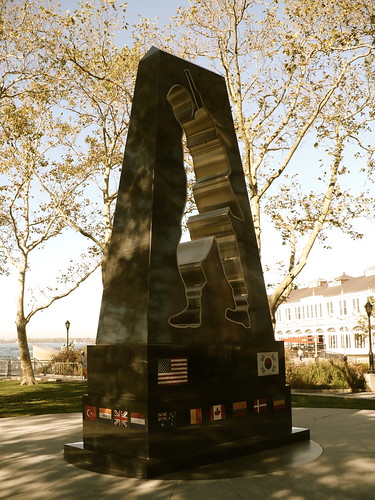
There's also the American Merchant Mariners' Memorial, inspired in design by an old photograph.

The eeriness of it comes from how the water rises and falls against the man in need of rescuing. Sometimes his head is above the water. Other times it isn't.
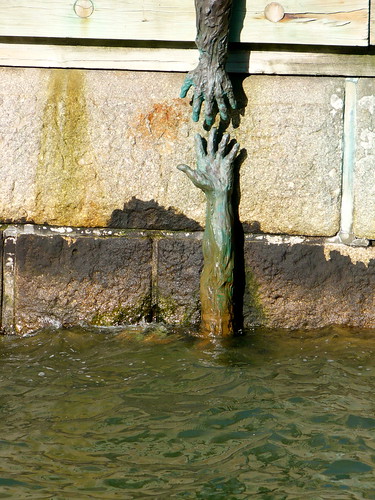
In Battery Park City, colorful globes have popped up for a short time (the "Cool Globes" exhibit), with the Freedom Tower in the background. The globes are meant to present ideas about greater energy efficiency and environmental conservation. From what I saw, people's initial impulse is to poke at them.
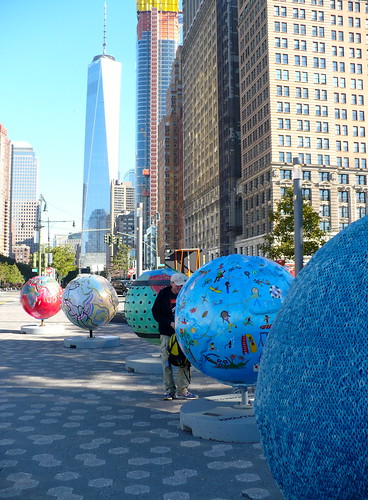
Mostly sticking to the Battery Park Esplanade along the Hudson River, we walked to Brookfield Place (still known by its older name, the World Financial Center). It's an upscale mall; at its heart - the Winter Garden atrium.

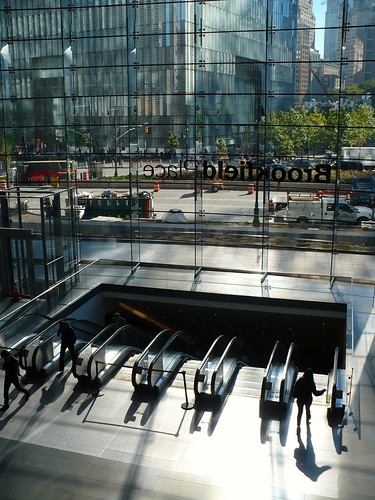
From this bastion of material prosperity, we walked to the Irish Hunger Memorial.
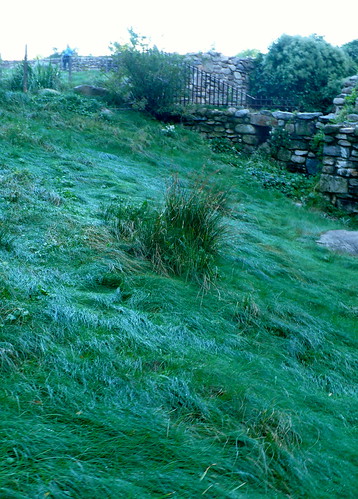
The memorial is made of stone and grass, and a dark passageway full of testimony to famine. Large rocks are scattered around, inscribed with the names of Ireland's counties. From the top, there's a view of the river.
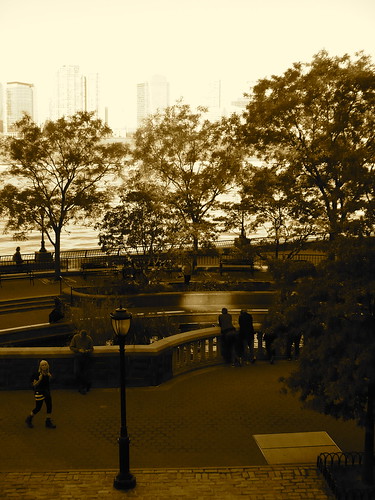
Throughout the walk, so much caught the eye, like patterns of windows.

Children playing on their day off from school.

Existential reminders.
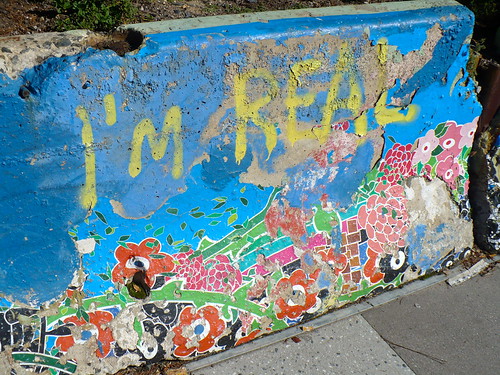
Things that make you do a double take.
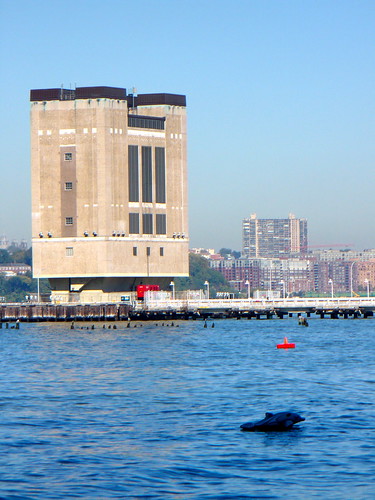

Why shouldn't there be stacks of giant bagels by a fountain? (They feature in a Timeout NY article with a dramatic title: "Giant Bagels have taken over Greenwich Village and Hudson River Park.")
I found out more about some of the buildings I passed (like the Jane Hotel, which housed survivors of the Titanic). But other buildings remained nameless to me, like these, with their beautiful balconies.
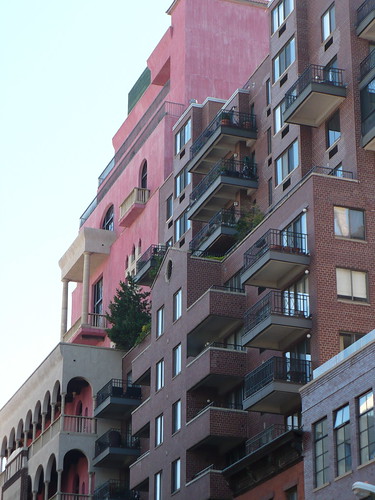
Farther inland, we walked the length of High Line Park, built on old elevated train tracks. The park is a mishmash of art, nature and clever architecture, playing off the buildings nearby, and I couldn't enjoy it the way it deserved. It was so crowded, and we kept moving along in single file, snatching at samples of it. But these were beautiful samples, at least.
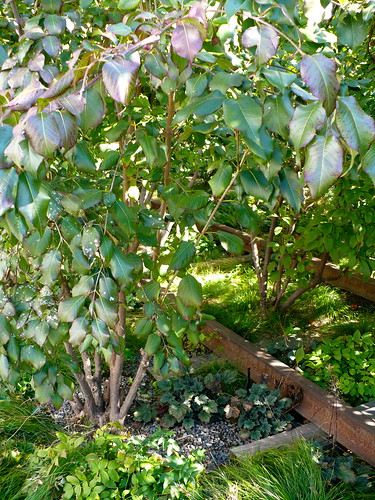
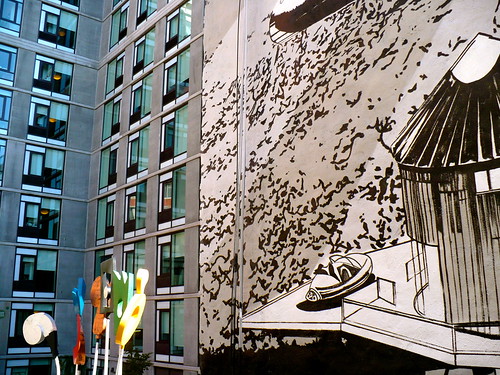
Towards the northern end of the park, the West Side Yard appeared, home to Long Island Railroad (LIRR) trains.
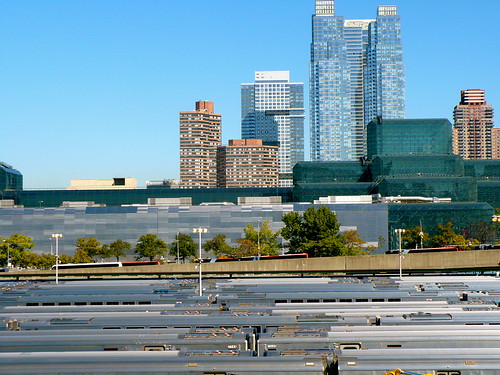
We stopped to eat at one of the New York Waterway terminals, then it was on past a landscape of steel, glass and military history, with the aircraft carrier, the USS Intrepid, out on the Hudson and buildings like these in the neighborhood.
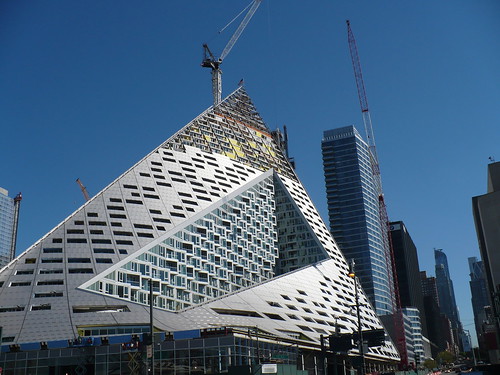
Riverside Park South came next.

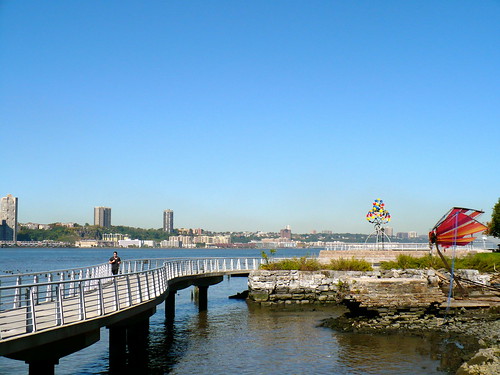
The reddish winged sculpture in the foreground is "Fragment of an Angel" by Kathleen Jansyn. In the background, the multi-colored "Thrive" by Paola Morales.
And in the installation below, Ken Shih asks, "Can Love Pervade Space?" A question I can't begin to answer. The sense I get from parts of his sculpture is thwarted near-connections. People talking at or past each other, or looking pointedly away. But that's only a first impression. I didn't examine all the heads and faces; maybe a couple of them have found rare intimacy.

We took a detour to find Septuagesimo Uno, said to be the smallest park in Manhattan (only .04 acres). The photo I took didn't come out well, but it's basically crammed into an alley between two brownstones, and my main impression from it was that it had a lot of flies. There's some more info about it here. It used to be called the "71st Street Plot," but back in Giuliani's day, it got its more fancy name, because '71' in Latin sounded classier, maybe? There was one woman sitting there with a small black dog, and she was bewildered and amused that a whole walking group turned up for a peek.
The park that really stands out in the area is Riverside, which hugs the Hudson River for many blocks.

Eleanor Roosevelt greeted us at the 72nd street entrance to the park.
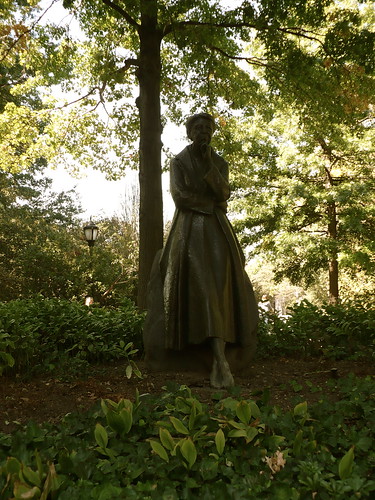
Farther north, around 83rd street, we stopped by Mount Tom, a rocky hill visited frequently by Edgar Allan Poe when he lived in the city. Maybe he wrote "The Raven" on it, or brainstormed places where people could be buried alive. Or had all kinds of other thoughts about who knows what, even happier things.
Riverside Park is home to various memorials and sculptures. Including the Soldiers' and Sailors' Monument.
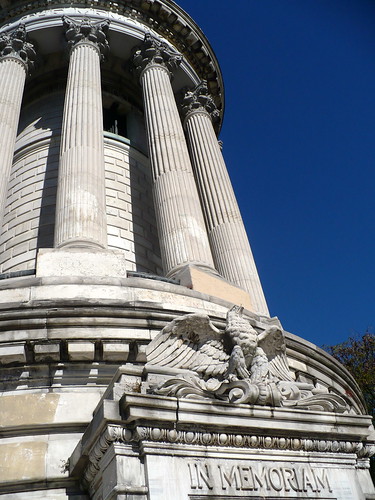
And Grant's Tomb.
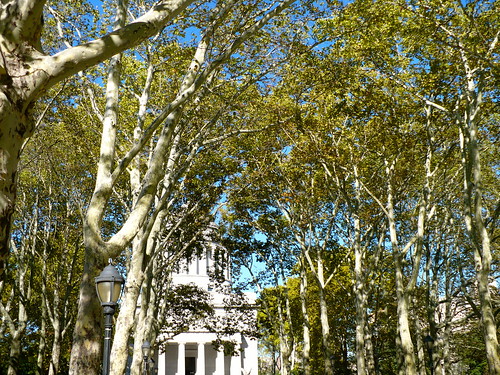
In Harlem, the group stopped at the Fairway Supermarket for some fuel.
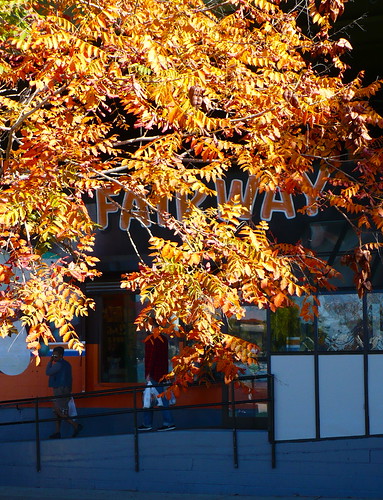
Across the street from the supermarket there's a lovely park - West Harlem Piers Park – and through a sculpture by Nari Ward, I had a peek of the George Washington Bridge, which we'd be seeing up close.
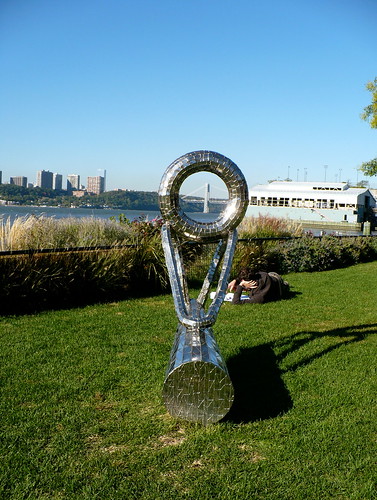
In Upper Manhattan, the parks hugging the Hudson are a little quieter. Not that they don't get any traffic or picnickers, but they aren't really on the map for tourists. There's more space to breathe.

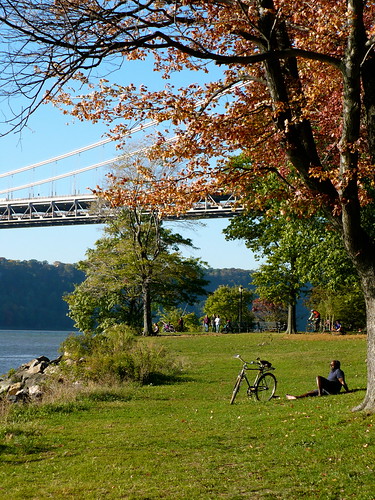
Walking along the river, I sometimes got an impression of it without distraction from bridges and buildings. Now and then I could get a sense of its breadth and age.
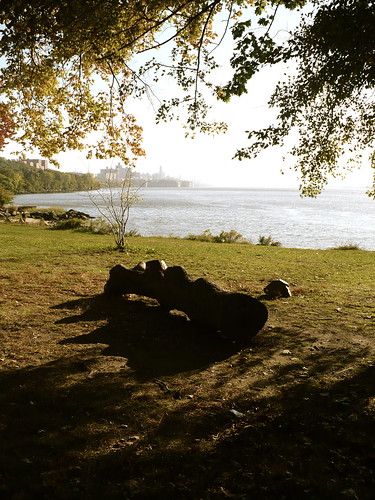
In Fort Washington Park we visited a historic lighthouse, the Little Red Lighthouse (and if it sounds like a storybook name, and not just a straightforward description, know that it's the main character of The Little Red Lighthouse and the Great Gray Bridge - a children's book that helped keep the lighthouse popular and in place even after it outlived its functional purpose).
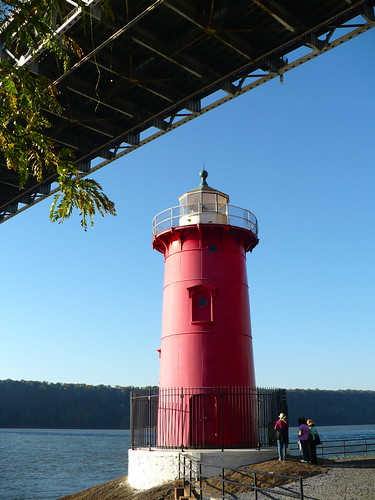
Overhead, the George Washington Bridge.

After chilling out by the bridge for a bit, we climbed up to the Henry Hudson Parkway and walked alongside it, irritating the bike riders we shared a path with. One of the parkway's highlights is Inspiration Point, which looks out over the river.

The leaves turning were also a delight.

The walk leader's initial intention was to go through Inwood Hill Park, but as we were behind schedule, and it was getting dark, he decided against it (I walked through Inwood Hill Park in the spring - for a look at it, and more of Northern Manhattan and Riverside Drive, check out this post). At least we passed by Isham Park, with its giant ginkgo tree.
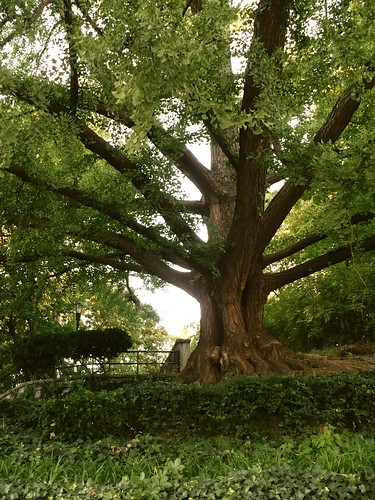
And we left the island by way of the Broadway Bridge at its northern tip, where it crosses Spuyten Duyvil Creek, though maybe this is the section of the water that's technically called the Harlem River Ship Canal. (Not that it mattered much to me.)

But sometimes these technicalities do make a (small) difference. Initially, I thought I'd walked the length of Manhattan as a borough, and that by crossing the Broadway Bridge, I was in the Bronx. However, I was technically still in Manhattan. The group stopped in the neighborhood of Marble Hill, which is part of the borough of Manhattan (and the only part of Manhattan, I think, on the mainland US). It's contiguous with the Bronx, but it isn't the Bronx. To walk the length of the borough of Manhattan, I would have had to keep walking several more blocks out of Marble Hill. So really, I just walked the length of the island of Manhattan. (Maybe I'll save the borough-length walk for another time.)
And because I don't want to end the post on a nitpicking note, I'll say that I had a fantastic day. It really was a brilliant walk.